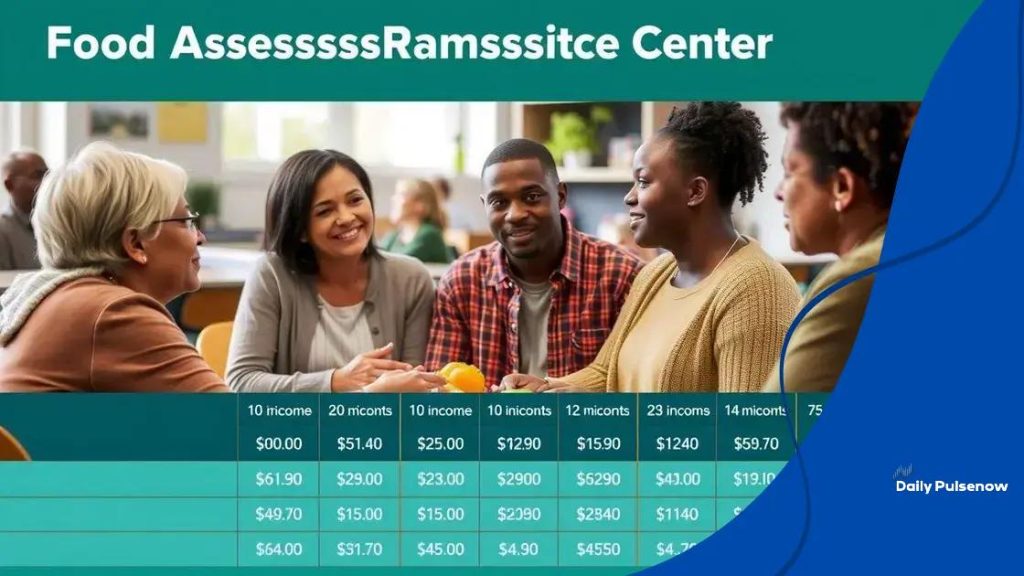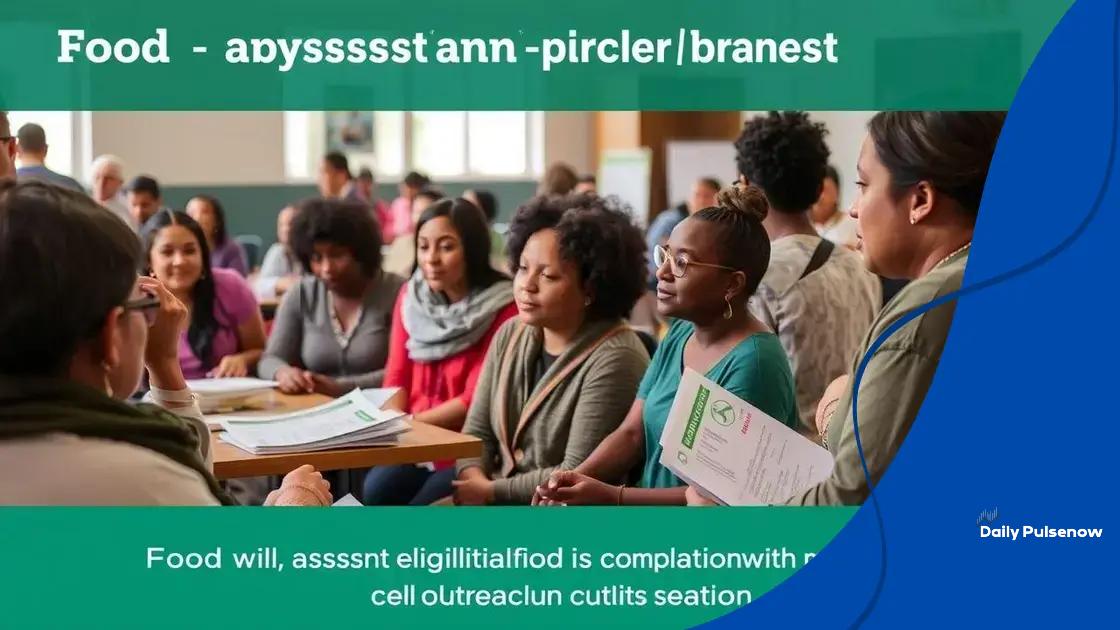Food assistance income limits: what you need to know

Anúncios
Food assistance income limits determine eligibility for various support programs, primarily based on household size and income levels, helping low-income individuals access necessary nutritional resources.
Food assistance income limits play a crucial role in determining who can access essential support programs. But do you know how these limits affect you or your community? Let’s explore their importance and how they work.
Anúncios
What are the food assistance income limits?
Understanding food assistance income limits is vital for those seeking help. These limits determine eligibility for various programs designed to support individuals and families in need.
Each food assistance program has its own set of income limits, making it essential to be aware of them. For instance, the Supplemental Nutrition Assistance Program (SNAP) has specific income thresholds that vary based on the number of household members.
Key Factors Influencing Income Limits
Several factors come into play when determining these limits:
Anúncios
- Household size: More members may lead to higher income limits.
- Income sources: Different sources of income may be counted differently.
- State regulations: Local laws can influence overall eligibility.
Why is this important? Knowing where your income stands in relation to the limits can help you plan your finances better. It might also encourage you to seek assistance sooner rather than later.
Many people often overlook the additional benefits that could come from understanding these limits. Besides basic grocery support from programs like SNAP, there are also local food banks available to help those who qualify under these income thresholds. Exploring these options can significantly alleviate financial stress.
How do income limits vary by program?
When it comes to food assistance income limits, the parameters can vary greatly depending on the program. Each program has unique guidelines that determine who qualifies and how much assistance is available.
For example, the Supplemental Nutrition Assistance Program (SNAP) uses specific income thresholds that are based on household size. This means that a larger family may qualify for a higher limit, allowing them better access to food benefits.
Variations Among Different Programs
Different food assistance programs have their own calculations for income limits. Here are a few notable programs and their characteristics:
- Women, Infants, and Children (WIC): Focused on pregnant women and infants, usually with a higher income threshold.
- Temporary Assistance for Needy Families (TANF): Provides cash assistance with varied limits based on family size and other conditions.
- Local food banks: Often have their income requirements but can be more flexible than governmental programs.
Understanding these differences is crucial to navigating the food assistance system. Some programs may have stricter limits, while others might allow families to receive help despite higher incomes, especially in times of crisis.
This knowledge could empower applicants to maximize their benefits. If you are near the limits, it is still worth applying, as exceptions or further assistance may be available based on individual circumstances.
Who qualifies for food assistance?

Determining who qualifies for food assistance involves understanding various criteria that differ across programs. Generally, these programs focus on helping low-income individuals and families meet their nutritional needs.
To qualify, applicants must usually meet specific income limits. These thresholds vary based on household size, which means larger families may have higher income limits. Certain programs also consider factors like assets, residency status, and work requirements.
Common Eligibility Criteria
Here are several key requirements that many food assistance programs share:
- Income level: Must fall below a certain percentage of the federal poverty level.
- Residency: Applicants usually need to be residents of the state where they are applying.
- Citizenship status: Many programs require applicants to be U.S. citizens or qualified immigrants.
- Household composition: Different household sizes may impact eligibility.
In addition to these general requirements, some programs target specific populations. For instance, the Women, Infants, and Children (WIC) program assists pregnant women, new mothers, and young children. This means certain groups can qualify even if they may not meet standard income limits.
Understanding these factors can help individuals and families access vital resources more effectively. It’s a good idea to check with local agencies for detailed eligibility requirements, as they may differ significantly across programs.
Steps to verify your eligibility
Verifying your eligibility for food assistance is crucial for accessing the benefits you need. This process ensures that you meet the income limits and other requirements set by each program.
Start by gathering all relevant documents. This includes proof of income, identification, and any other necessary information, such as your household size. Having everything organized can greatly speed up the verification process.
Important Steps to Follow
Here are some key steps to help you verify your eligibility effectively:
- Check the eligibility criteria: Understand the specific requirements for each program you’re applying for.
- Gather necessary documents: Collect pay stubs, tax returns, and proof of residency.
- Contact local agencies: Speak to representatives who can guide you through the process.
After you have gathered your documents, fill out the application accurately. Make sure to double-check for errors, as mistakes can delay the process. Different programs may have online applications, while others might require you to apply in person.
Once submitted, follow up on your application. Most programs will contact you to inform you of your eligibility status. If you have not heard back in a reasonable time, don’t hesitate to reach out again for updates.
Resources for navigating food assistance
Finding the right resources for navigating food assistance can significantly ease the process. Various organizations and programs exist to help individuals and families access the support they need effectively.
One of the best ways to start is by using local food banks. These organizations provide food directly to those in need and often have additional resources to assist with applications for other assistance programs.
Useful Resources
Here are some valuable resources to consider:
- Food banks: Many communities have food banks that distribute food to low-income individuals and families.
- Government websites: Websites such as the USDA provide information on federal programs like SNAP and eligibility requirements.
- Community organizations: Local nonprofits often offer counseling and resources for food assistance.
- Hotline services: Many states have helplines where you can get information about food assistance and other support services.
Additionally, many local libraries and community centers have resources and staff who can help guide you through the application process. These places can also offer workshops to educate about available programs and how to apply.
It’s important to remember that assistance programs may change, so staying informed through these resources can lead to better access to the support you need. Starting your journey with the right information can make a significant difference.
FAQ – Common Questions About Food Assistance
What are the eligibility criteria for food assistance?
Eligibility criteria often include income limits, household size, and residency status, which may vary by program.
How do I apply for food assistance?
You can apply for food assistance through local government offices, online applications, or community organizations that provide help.
What documents do I need to verify my eligibility?
Typically, you’ll need proof of income, identification, and documentation showing your household size.
Where can I find local food assistance resources?
Local food banks, community centers, and government websites are great places to find resources for food assistance in your area.